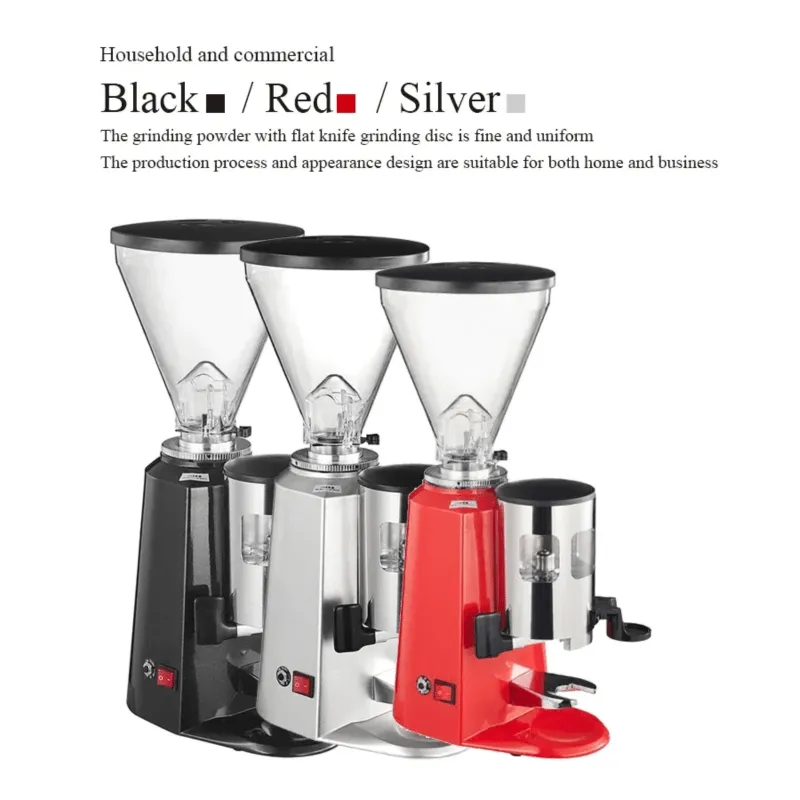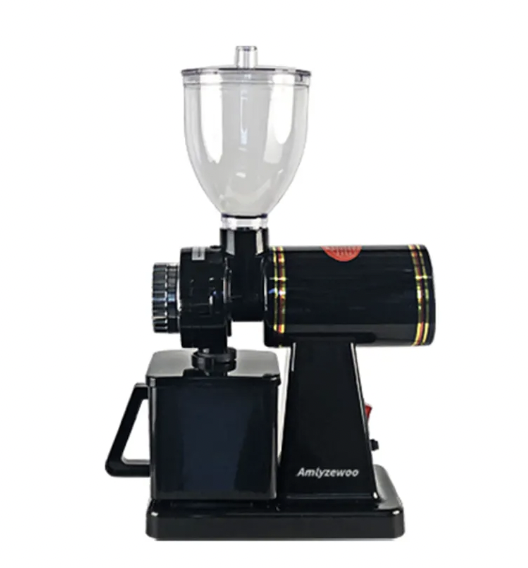The Science of Coffee Grinding: Why Consistency Matters
The Role of Particle Size in Extraction
Getting the hang of how particle size matters in coffee grinding makes all the difference when it comes to getting good flavor out of those beans. The actual size of the particles has a big impact on how fast flavors come out during brewing, and this affects both how strong and tasty the coffee ends up being. A consistent grind means everything extracts at roughly the same pace, so no part gets overdone while others stay underdeveloped. But if there's variation in the grind size, some parts might extract too much creating bitterness, while other bits remain locked away resulting in sourness. Most home brewers notice this when they get that weird combination of burnt and sour flavors in their cup.
Studies indicate that getting the best out of coffee happens when particles fall into certain size ranges, which explains why good grinders matter so much for making decent coffee. Take burr grinders as an example they're built to give pretty uniform grounds throughout, something that really makes a difference in how rich and balanced the final cup tastes. When folks get control over those tiny coffee particles, they can actually tailor their morning brew exactly how they want it. Some people prefer finer grounds for stronger espresso shots while others go coarser for French press. Either way, messing around with grind size definitely affects both flavor profile and that wonderful coffee smell that fills up the kitchen.
Over-Extraction vs. Under-Extraction: Finding the Balance
Getting the right balance of extraction really matters if we want good tasting coffee, since it affects how much flavor comes out of those coffee grounds. When coffee sits in water too long, something called over-extraction happens. The result? A bitter cup that nobody enjoys drinking. Most folks find it just plain yucky. What's happening here is that too many different substances get pulled out during brewing, which masks all the subtle notes that make coffee special. Some people actually prefer slightly under extracted brews sometimes, but going overboard definitely ruins the experience.
When there's not enough extraction happening, the coffee ends up weak and usually has that sour taste we all know too well. What happens here is pretty straightforward really the brew just pulls out too few compounds from those coffee grounds, so all those rich flavors stay locked inside instead of making it into our cups. Getting this sweet spot right matters a lot whether someone works at a fancy café or just makes coffee at home trying to level up their game. Once folks get the hang of balancing things out properly, they can really make the most out of their burr grinder. A good grind setting means better coffee every time, something worth chasing after for anyone who wants to stop settling for average morning brews.
Burr Coffee Grinder vs. Blade Grinders: Key Differences
How Burr Grinders Preserve Flavor Integrity
People love burr grinders because they actually crush coffee beans evenly instead of just chopping them up. The consistency matters a lot since it keeps those precious oils intact, which gives coffee its amazing smell and taste. Coffee researchers have found that these grinders don't create as much heat while working compared to regular blade models. Less heat means fewer chances of messing with the flavors in the beans, so what ends up in your cup tastes better overall. What makes burr grinders really stand out though is how easy it is to adjust the grind size. Want to make espresso? Set it one way. Going for French press? Change it another. This flexibility lets coffee lovers tweak their setup exactly how they like it, whether they prefer something strong and bold or smooth and mellow.

The Limitations of Blade Grinder Technology
Blade grinders have some real drawbacks because of how they chop instead of grinding properly, creating all sorts of different sized coffee particles. When the grounds aren't uniform, it messes up the whole extraction process and makes the coffee taste off. Another problem is that these machines tend to generate quite a bit of heat while running, something that actually damages the delicate flavors in coffee beans over time. Most serious baristas avoid blade grinders altogether since they can't control the grind size very well at all. People who really know their coffee usually tell others not to bother with blade models if they want something decent tasting, simply because there's no way to get that perfect balance between bitterness and acidity that comes from properly ground beans.
Heat and Friction: Why Burr Grinders Protect Coffee Quality
Thermal Degradation and Its Impact on Aroma
When coffee gets too hot during grinding, it damages those special aromatic compounds that make coffee smell so good and taste amazing. The heat from regular grinding processes breaks down these important elements, which messes with both the scent and flavor of the final cup. That's why burr grinders matter they're designed to create less friction, so they don't generate as much heat in the first place. Lower heat means better preservation of all those complex flavors we love in coffee. Most baristas will tell anyone who asks that keeping things cool while grinding is basically essential if we want our coffee to taste great. Plus, since burr grinders crush beans into consistent sizes every time, none of those precious aromas get lost in uneven particles, making each brew just a little bit better than the last one.
Reducing Friction for Smoother Flavor Profiles
What makes burr grinders so special is how they're built to minimize friction during the grind. Less friction means the beans get processed more efficiently while preserving those important flavor compounds. People who switch to burr grinders usually notice their coffee tastes noticeably better right away. The flavors come through much more balanced and satisfying compared to other methods. Coffee enthusiasts consistently mention in their reviews that burr grinders deliver this rich, full-bodied taste that just feels right on the palate. Many describe it as making their morning cup something worth looking forward to instead of just another routine.
Precision Brewing: Matching Grind Size to Your Method
Espresso: Fine Grinds for Optimal Pressure
Espresso enthusiasts know that getting that perfect shot really comes down to finding the correct grind size. When coffee grounds are finer, they pack tighter in the portafilter which builds up more pressure inside the machine. This increased pressure helps extract those bold flavors faster from the beans. The pressure thing matters quite a bit too since it affects how crema forms on top of the espresso. Crema is that beautiful brown foam layer everyone looks for when judging if an espresso was made properly. Skilled baristas tweak their grinders constantly depending on whether the beans are fresh out of the roaster or have been sitting around for days. Darker roasts usually need slightly coarser settings while lighter roasts respond better to finer grinds. Getting this balance right makes all the difference between just okay espresso and something truly special with that amazing aroma and balanced taste profile.
French Press: Coarse Consistency for Full-Body Results
For those who enjoy the strong, robust flavor profile characteristic of French press coffee, going with a coarse grind makes all the difference. The coarser particles simply won't get over extracted during the extended steeping time that comes with this brewing method. What happens instead is that the coffee releases its delicious oils and flavors properly without getting bitter or harsh. Many coffee lovers mess around with different grind settings just to see what kind of interesting notes come out in their French press cups. Playing around with this actually brings out better characteristics from the beans themselves, creating that nice middle ground where the coffee feels substantial on the tongue yet still tastes great.
Pour-Over: Medium Grind for Balanced Extraction
Pour over brewing really hinges on getting things just right, which means going with a medium grind most of the time. This helps water move smoothly through the coffee without rushing or dragging, so we end up with something that isn't bitter from too much extraction or weak from too little. When folks mess around with the grind size along with other factors such as how hot the water is and how they actually pour it into the filter, these small adjustments make a big difference in what ends up tasting good. People who know their stuff will tell anyone willing to listen that changing the grind even slightly can completely transform the flavor profile of whatever coffee they're making, turning an ordinary cup into something worth savoring.
The Long-Term Value of a Quality Burr Coffee Grinder
Durability and Consistent Performance Over Time
When someone invests in a good burr coffee grinder, they're really going for something that lasts years and keeps performing well. The better models, particularly ones built with solid steel or ceramic parts, just outlast those cheap plastic alternatives any day. What makes them special is how evenly they crush the beans, so no matter what kind of brew method someone prefers, the result tends to taste much better than with other grinders. Consumer testing has shown that premium burr grinders stick around for 10, 20 even 30 years if cared for properly. Sure, these machines come with a bigger price tag upfront compared to basic models, but most coffee lovers find that the money spent pays off through all those consistently great cups of coffee without having to replace the equipment constantly.
Why Investment in Burr Technology Pays Off
Investing in burr technology for coffee grinding pays off financially in the long run. Sure, good burr grinders come with a higher price tag at first glance, but most people find that the better grind quality makes up for it over time. Both home coffee lovers and cafe owners report noticeable improvements when switching from blade grinders. Customers tend to appreciate the richer taste profiles achieved with consistent grinding. The coffee scene keeps growing every year, so there's definitely a market for reliable gear. Burr grinders hold their value pretty well and actually make a difference in how good the final cup tastes. That's probably why serious coffee drinkers always mention having a decent burr grinder as essential equipment for making great coffee at home.
FAQ
What is the difference between a Burr Coffee Grinder and a blade grinder?
A Burr Coffee Grinder crushes beans to a consistent size, preserving flavor integrity by reducing heat and friction during the grinding process. In contrast, blade grinders chop beans unevenly, generating more heat and potentially compromising flavor.
How does grind size affect coffee extraction?
Grind size affects the extraction rate of coffee flavors. A uniform grind ensures balanced extraction, while inconsistent grinds can lead to bitter or sour notes due to uneven extraction rates.
Why is a Burr Coffee Grinder considered a worthwhile investment?
A quality burr grinder offers durability and consistent performance, ensuring superior grind quality and flavor extraction over time. The initial higher cost is often offset by the long-term value and satisfaction it provides.




